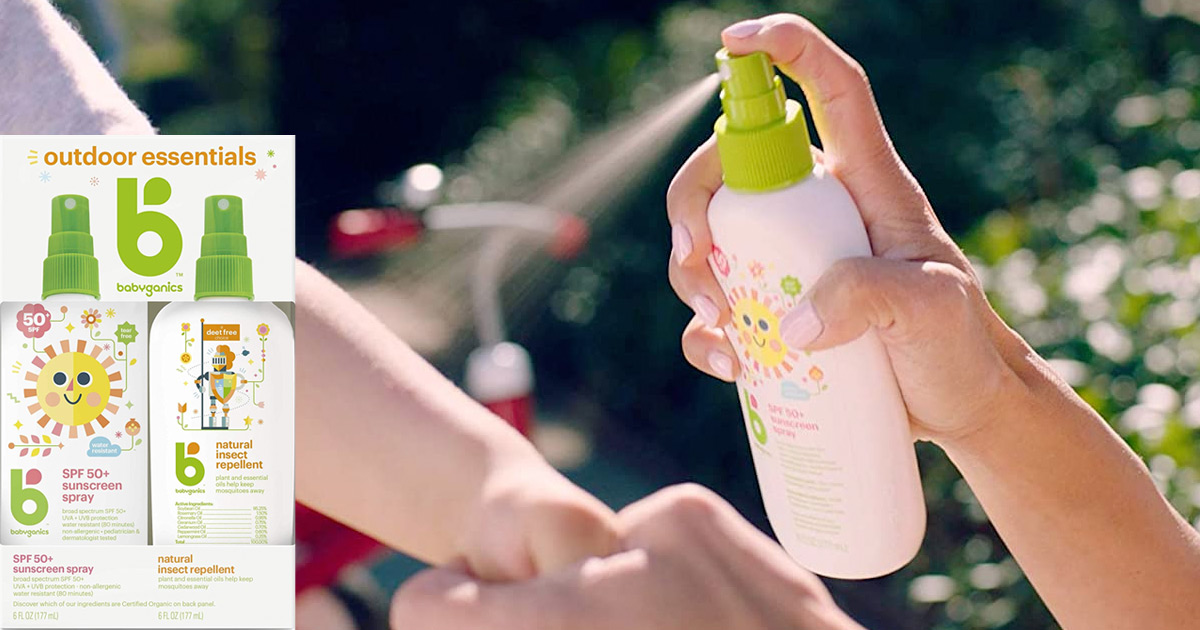


Think Baby Safe Sunscreen Stick SPF 30 ($8) are mixed with extracts of raspberry seed oil and pomegranate (both give natural UV protection) for a shot of soothing moisture. Ingredients like organic shea butter and calendula.
#Babyganics sunscreen harmful skin
This creamy lotion will give delicate skin a softness boost. Editor’s Note: we are huge fans of the Badger Baby Sunscreen, too!Įarth Mama Baby Mineral Sunscreen Lotion SPF 40 ($15) It’s also naturally sweat-and-water-resistant for up to 80 minutes, making it a must for soccer games or energetic playground sessions. It has nine non-GMO ingredients, including non-nano zinc oxide, sunflower Vitamin E, and organic beeswax. If your kids say “ick” to the white residue that mineral formulas leave, opt for this clear drying one. It glides on smoothly, thanks to the cocoa butter ingredients, and kids will like it for its faint chocolatey scent.īadger SPF 40 Kids Clear Sport Sunscreen ($18) This kids sunscreen stick formula is best for applying on little ears, nose, and hidden spots where the sun can sneak in. We love the fact that the cap turns pink in intense UV light, reminding you that it’s time to reapply.Ĭoppertone Pure & Simple Baby SPF Sunscreen 50 Stick ($7) Sperling recommends this kid-safe and baby sunscreen brand for its mineral-active zinc oxide and chemical-free formula that’s both paraben and fragrance-free. Babyganics sunscreen has a thick formula that’s visible when you apply it (so helpful for when your baby isn’t sitting still) but after a few passes of gentle rubbing, the white streaks disappear.īlue Lizard Baby SPF 30+ Mineral Sunscreen ($14)ĭr. Moms are big fans of this baby sunscreen for its plant-based ingredients and a proprietary blend of tomato, sunflower, cranberry, black cumin, and raspberry seed oils to deeply nourish and protect delicate skin. These 9 kid-safe and baby sunscreens are #NJMOM approved The safer way to go? A kid sunscreen stick or lotion can guide you through the application to see where and if you miss spots. As for types, even though kid sunscreen spray is a mom-ease favorite for getting sunscreen on fidgety kids, they have a bad rap because you can inhale the particles after a spritz. Regardless, the formula should be broad-spectrum with an SPF of at least 15 for everyday activity (recommended by The Skin Cancer Foundation) for protecting you from both UVA and UVB rays and preventing skin cancers. While chemical formulas are thinner and spread quickly without leaving a trace, most moms prefer the mineral types because the physical ingredients sit on top of the skin and aren’t absorbed into the bloodstream (though there is no definitive evidence on long-term effects of chemical absorption). Chemical sunscreens have ingredients like oxybenzone and avobenzone that, when applied, work like a sponge to absorb UV light. Physical, aka mineral sunscreens, with zinc or titanium dioxide, acts as a shield, physically blocking the sun from entering the skin and causing damage. There are two different types of sunscreen-physical and chemical. The first step to finding one you want is to know the formulas. But there are ways to narrow your search. Let’s face it-scanning Amazon looking for sunscreen is about as fun as listening to your kids whine about what to do these days. What to look for with kid-safe and baby sunscreen But with so many products out there, how’s a mom to know which one to buy? Scroll down for the deets on the safest ingredients and clean formulas that will work for your babe (and you, too). It’s also important for preventing skin cancer, since the more sun exposure you have, the more likely you’ll get skin cancer later in life,” she says. “Sun damage is cumulative, and for young kids, it impacts how your skin will look in the future. Shari Sperling, a board-certified dermatologist in Florham Park, NJ, and affiliated with Saint Barnabas Medical Center, an RWJBarnabas Health facility in Livingston. For kids, it’s crucial because early childhood is a time when the skin is at its most vulnerable, says Dr. That means using a baby sunscreen for littles, and kid sunscreen for older children is a must when you’re spending time outside, no matter if it’s cloudy or sunny. Even when the forecast calls for clouds or rain, those damaging UV rays are there, with 80% penetrating your skin. But wearing sunscreen shouldn’t be just for the bright days. With summer here, you’ll probably have a bunch of kid-safe and baby sunscreen for those sunny beach, pool or playground days.


 0 kommentar(er)
0 kommentar(er)
